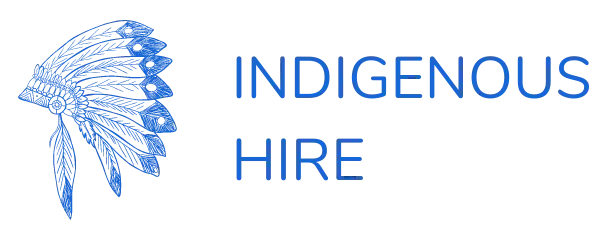Cover letters have become all the rage now, an essential addition to your job application. In other words, writing a good cover letter is a skill most certainly worth acquiring! So, let’s start from the beginning – what is a cover letter? What meaning and purpose does it serve?
Crafting the perfect cover letter is a crucial step in your job search journey. As you embark on this exciting path, remember that a well-written cover letter can truly set you apart from other applicants and significantly increase your chances of landing that coveted interview. By carefully highlighting your skills, experiences, and achievements in a concise, professional, and engaging manner, you demonstrate to potential employers your genuine interest in the position and your enthusiasm for their company. So, take the time to tailor each cover letter to the specific job you’re applying for, and let your unique voice and passion for your career shine through. With a little effort and dedication, you’ll be well on your way to finding the perfect opportunity to grow and thrive in the business world.
Step 1: Your intro to cover letters – definition and meaning
A cover letter is a formal document meant to accompany your resume (CV) in your job application. Its main purpose is to introduce you (in more detail) to the employer, to highlight specific qualification and skills that would make you stand out in the selection process.
You might ask – how important is a cover letter, anyways?
Well, it turns out – very much so. It suggests a deeper motivation, especially when it’s a properly tailored pitch (we will talk about customization later). It showcases your communicational skills, and can highlight key qualifications for a certain position. You can talk about your previous (relevant) experience in more detail and, essentially – tell the employer why you would be the best fit for the role. Your enthusiasm can shine through enough to land you an interview. And, in the end, it serves as a strong support for your resume!
Step 2: Preparation (pre-writing phase)
In this step, it is important for you to do a more in-depth research of the company, and especially, of the position that you’ll be applying for. This step is really important, because you will need to determine you main selling points and keywords that you will be incorporating in your cover letter. After doing that, it is time to either choose a template (Canva, for emample, has some good templates that are also free) or create one from scratch (while cover letter formats can vary slightly, they all follow a standard structure).
Step 3: The structure of your cover letter
Contact Information should include the following:
- Your Full Name
- Your Address
- City, State, ZIP Code
- Your Email Address
- Your Phone Number
- Date (Month, Day, Year)
Salutation
The guidelines are quite simple here:
- If you know the hiring manager’s name: “Dear [Hiring Manager’s Name],”
- If you don’t know the name: “Dear Hiring Manager,” or “To Whom It May Concern,”
Opening Paragraph
The main purpose of the opening paragraph is to:
- Express your interest in the position and (briefly) mention where you found the job posting or how you learned about the opportunity.
- State the specific position you’re applying for.
Body Paragraphs
The body paragraphs usually consist of 2-3 paragraps, and the main idea is to:
- Use the body of your cover letter to highlight your qualifications, skills, and experiences that are relevant to the job.
- Provide specific examples or achievements that demonstrate your suitability for the position (match your qualifications to the job).
- Explain why you are a good fit for the company and how your skills align with their needs.
- Address any specific requirements or qualifications mentioned in the job posting.
- Showcase your enthusiasm for the role and company.
Closing Paragraph
The perfect place and time to:
- Express your eagerness for an interview and your willingness to further discuss your qualifications.
- Thank the employer for considering your application.
- Mention that you’ve enclosed or attached your resume for their review.
- Include a formal closing, such as “Sincerely” or “Best Regards.”
Signature
There, you’ve done it. Your signature is the last step and the guidelines are as follows:
- Leave a space for your handwritten signature (if sending a printed letter).
- If sending your cover letter electronically, you can type your name beneath the closing.
Now, below you will find a standard template that you can alter and tailor specifically to your needs. You can reuse this example many times, as it is completely generic and adjustable. Also, the example consists of key components that every professional, good cover letter should have.
[Your Name]
[Your Address]
[City, State, ZIP Code]
[Your Email Address]
[Your Phone Number]
[Date]
[Employer’s Name]
[Company Name]
[Company Address]
[City, State, ZIP Code]
Dear [Employer’s or Hiring Manager’s Name],
I am writing to express my strong interest in the [Job Title] position at [Company Name], as advertised on [Source of Job Posting]. With my [X years] of experience in [Relevant Industry/Field], I am confident in my ability to make a meaningful contribution to your team.
In my previous role as [Your Previous Position] at [Previous Company], I [highlight a significant achievement or responsibility that demonstrates your qualifications]. This experience equipped me with [mention key skills or qualifications from the job posting, e.g., “strong project management skills,” “expertise in data analysis,” etc.]. I am particularly drawn to [Company Name] because of [mention something specific about the company, e.g., its innovative approach to [industry], commitment to [values], or recent achievements such as [mention a recent accomplishment or news about the company]].
Throughout my career, I have consistently demonstrated my ability to [mention relevant accomplishments, such as increasing efficiency, driving revenue growth, or solving complex problems]. I believe my expertise in [specific skills or areas] aligns perfectly with the requirements of the [Job Title] position.
I am excited about the opportunity to contribute to [Company Name]’s continued success and be part of a team dedicated to [mention the company’s mission or goals]. I look forward to discussing how my skills and experiences can benefit your organization in more detail during an interview.
Enclosed, please find my resume, which provides additional details about my background. Thank you for considering my application. I am eager to further discuss my qualifications with you. You can reach me at [Your Phone Number] or [Your Email Address].
Sincerely,
[Your Full Name]
Step 4: FAQ aka Addressing Common Questions
These are some of the most common questions and tips that we’ve seen asked over and over again. Let’s start from the beginning.
- How long should a cover letter be?
A cover letter should typically be one page long. Aim for around 250 to 400 words, keeping it concise and focused on your qualifications and enthusiasm for the job.
- How to start a cover letter?
As you’ve seen in the example above, it’s best to start with a professional salutation, such as “Dear [Hiring Manager’s Name]” if you have that information. If not, you can use a generic greeting like “To Whom It May Concern.”
- How to end a cover letter?
Again, conclude your cover letter with a strong closing statement. Express your enthusiasm for the position and your desire for an interview. Use a formal closing, such as “Sincerely” or “Best Regards,” followed by your signature.
- What about cover letter formatting and layout?
Well, it would be best to use a clean and professional format with standard fonts and margins. Keep it well-organized, with clear headings for each section (e.g., contact information, introduction, body paragraphs, closing, and signature).
- Any additional tips?
Some tips for writing an effective cover letter include customizing it for each job application, showcasing relevant skills and experiences, using quantifiable achievements and relevant keywords that have been used by the company in the posting, demonstrating enthusiasm, and proofreading for errors.
Step 5: Proofreading and editing
This is part of the usual drill, meaning you need to check for grammar and spelling errors a few times. Read the letter in its entirety one more time, make sure your language is clear and concise. Also, your cover letter should be consistent – meaning that all sentences should fit in together, make up a seemless story. Send it to a friend or a family member, get some additional outside feedback before sending it.
Step 6: Finalizing and sending
In conclusion, crafting a compelling cover letter is a crucial step in your job search journey, and it can significantly impact your chances of landing the job you want. By taking these tips and guidelines provided into account, you can effectively communicate your skills, experiences, and achievements to potential employers. Remember to personalize your cover letter, address the hiring manager by name when possible, and showcase your enthusiasm for the company and position. With a well-written cover letter, you can set yourself apart from other candidates and demonstrate your genuine interest in the role. So, take a fair share of your time to think about what you want to convey, and write a cover letter that truly reflects your passion and qualifications. As a result, you’ll be well on your way to finding the perfect work opportunity that aligns with your career goals.
Congrats, you’ve done it! You have written a well-rounded, good cover letter that will showcase just how professional and qualified you are for the role. Now it’s time to read that letter one more time and attach it to your application. Make sure to follow any additional submission guidelines and best of luck! We know you can do it.


